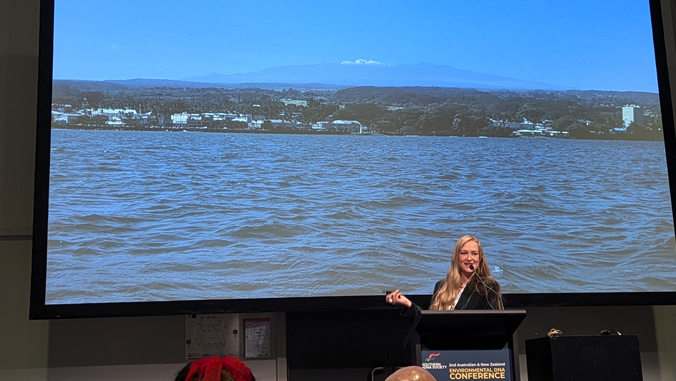Shooting for the Moon: Research at Hawai’i Institute of Marine Biology Offers First Step Toward a Lunar Biorepository to Secure Earth’s Biodiversity

Marine Protected Areas Producing More ‘Trophy-Size’ Fish
July 23, 2024
Sharks Critical to Ocean Ecosystems, More Protection Needed
August 2, 2024Shooting for the Moon: Research at Hawai’i Institute of Marine Biology Offers First Step Toward a Lunar Biorepository to Secure Earth’s Biodiversity

THE STARRY GOBY COLLECTION TEAM AT HIMB. FROM LEFT TO RIGHT: LEE WIGHT (NMNH), CARRIE CRAIG (NMNH), DIANE PITASSY (NMNH), LYNNE PARENTI (NMNH), MARY HAGEDORN (SNZCBI-HIMB) AND MIKE HENLEY (SNZCBI-HIMB) PHOTO CREDIT: SMITHSONIAN INSTITUTION
By Maria Frostic
Research led by scientists at Hawaiʻi Institute of Marine Biology (HIMB) and Smithsonian Institution explores an unprecedented approach to safeguarding Earth’s imperiled biodiversity, through cryogenic preservation of biological material on the moon. The concept might seem out of this world, but the moon is in fact perfectly poised for such a feat. The craters of the lunar poles lie in perpetual shadow, making them cold enough for passive cryogenic preservation, with no requirement for electricity or liquid nitrogen. The paper, published in BioScience and written in collaboration with researchers from Harvard Medical School, National Ecological Observatory Network, University Corporation of Atmospheric Research, and University of Minnesota outlines a roadmap for the lunar biorepository’s creation and explores ideas of governance, types of biological material to be stored, and how to address challenges like radiation and microgravity. The study also demonstrates the successful cryopreservation of skin samples from a Hawaiian reef fish, which are now stored at the Smithsonian. Mary Hagedorn, a research cryobiologist at the Smithsonian’s National Zoo and Conservation Biology Institute (NZCBI) and affiliate faculty member at HIMB, is lead author of the paper. “Initially, a lunar biorepository would target the most at-risk species on Earth today,” she explains of the project, “but our ultimate goal would be to cryopreserve most species on Earth.”
Read the full article here!




